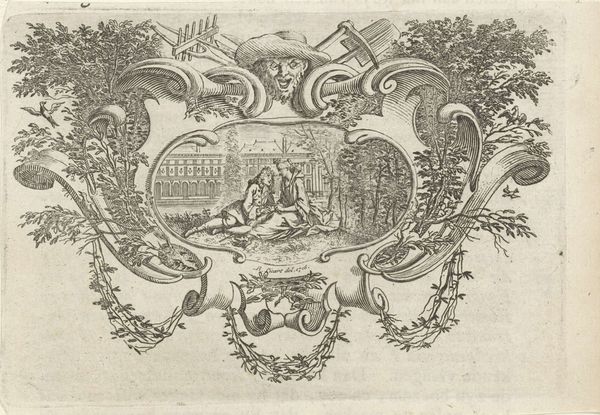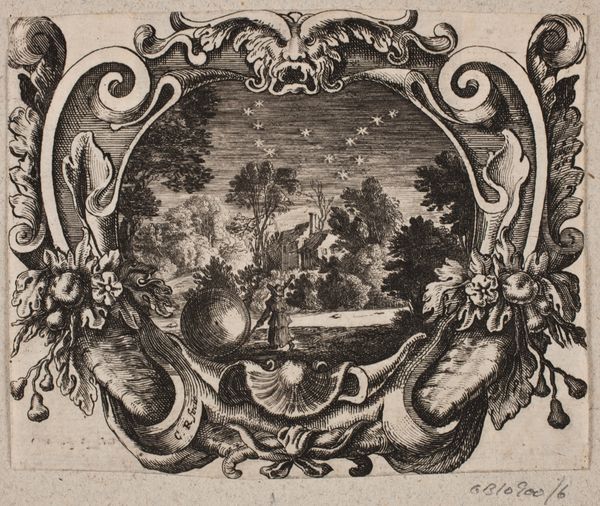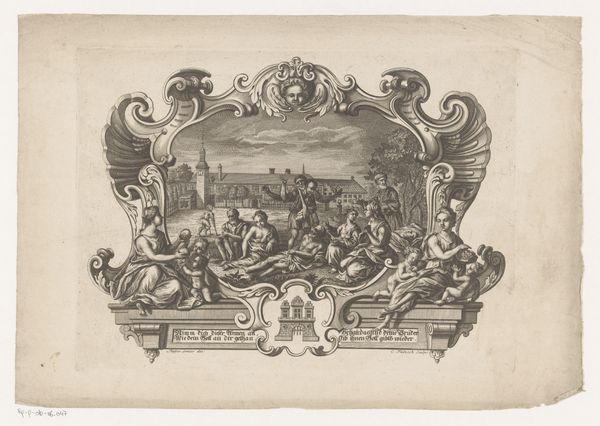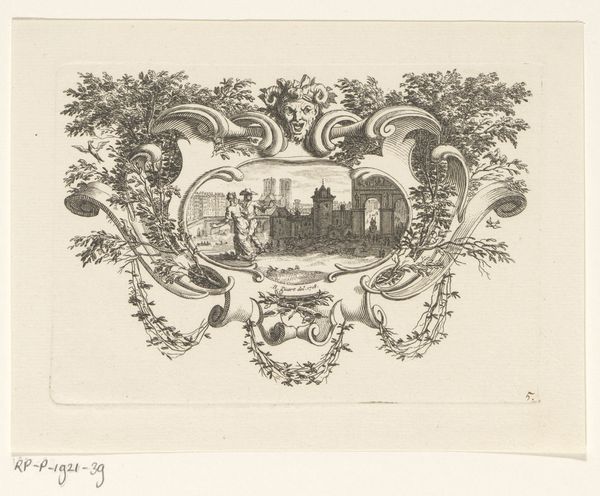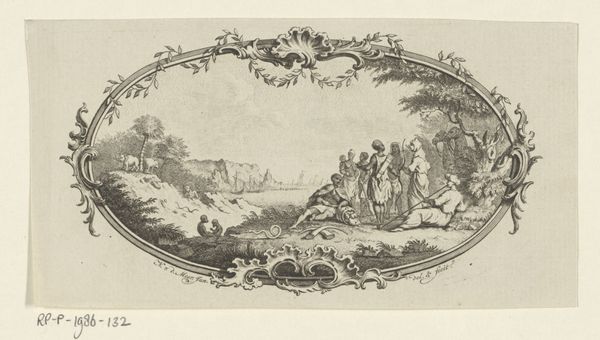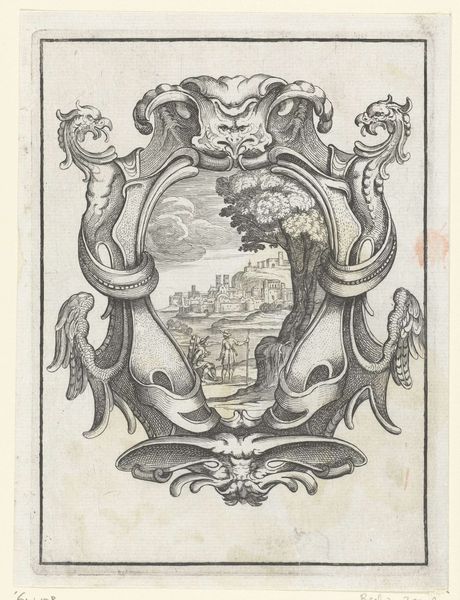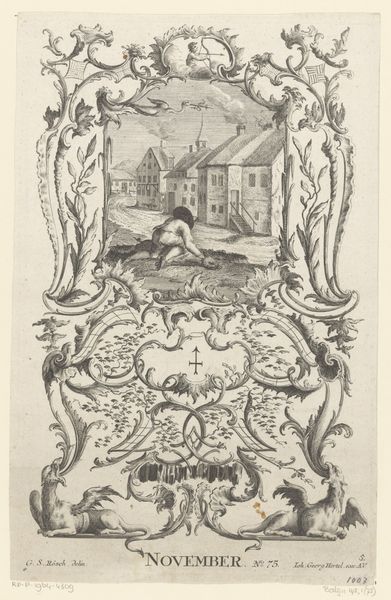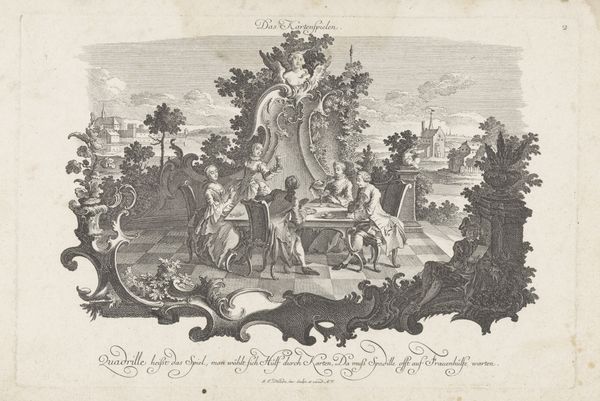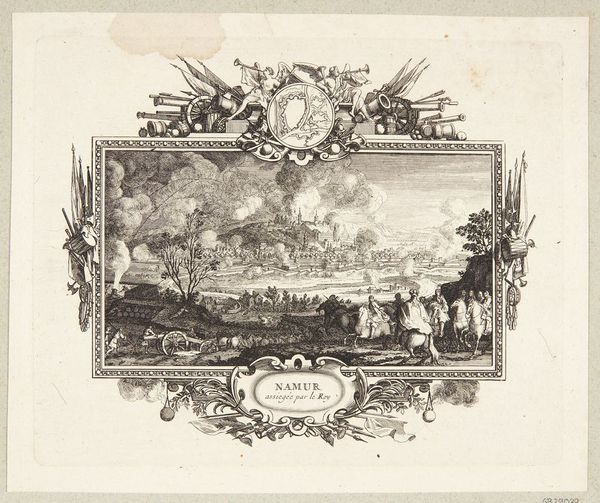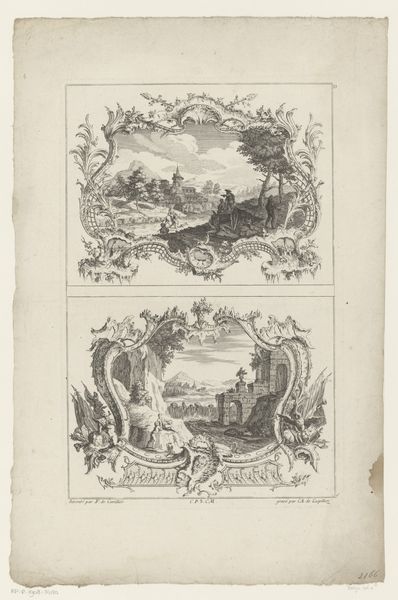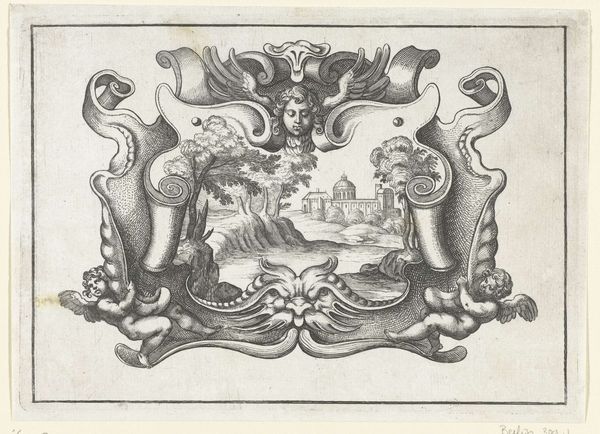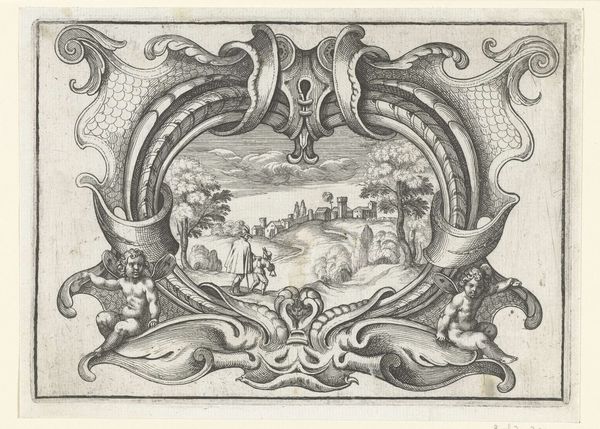
print, engraving
#
baroque
#
pen drawing
# print
#
landscape
#
form
#
line
#
genre-painting
#
engraving
Dimensions: height 184 mm, width 239 mm
Copyright: Rijks Museum: Open Domain
Curator: Let's turn our attention to this captivating print, "Herder en twee figuren in een landschap," which roughly translates to "Shepherd and two figures in a landscape." Created around 1745 by Carl Albert von Lespilliez, it's currently held here at the Rijksmuseum. Editor: The entire piece feels like a fleeting daydream, caught within the swirling border. There’s something melancholic about it— a pastoral scene, but tinged with a hint of impermanence. Curator: It's a rather remarkable engraving, particularly when you consider the meticulous process involved in its creation. Lespilliez's masterful use of line weight is evident, guiding the viewer’s eye throughout the composition and conveying depth on a flat surface. You see that in how the darker, denser lines define the figures, setting them apart from the more lightly etched landscape. Editor: I’m drawn to the border. It frames the scene but it also *becomes* the scene—like it's erupting, an organic element in playful conflict with the constructed space within. I get a distinct Baroque exuberance. Those dragons at the bottom are delightful. Curator: The ornamention definitely speaks to the Baroque aesthetic. It provides insight into the material culture and the period’s preference for highly decorative art objects. This print wasn't merely for viewing, but for demonstrating status and refinement, displaying wealth. Editor: Which gives an edge to that melancholy—this gilded cage imprisoning what would otherwise be a perfectly content image of country living. The little vignettes within the landscape imply storytelling too, don't they? A narrative implied, never explicitly stated. Curator: Yes, and that interplay between form and content, decoration and narrative is critical. We are asked to consider not only what is depicted, but also how it is presented and circulated as a valuable commodity. The use of line, the printmaking techniques employed, and the social function of such images are intertwined. Editor: I leave this piece now with a heightened appreciation for the detail. And the thought of owning a piece of art, designed to subtly show off your worldly sophistication. It's interesting, what pieces of ourselves are truly original, and which are performative for onlookers, real or imagined.
Comments
No comments
Be the first to comment and join the conversation on the ultimate creative platform.
